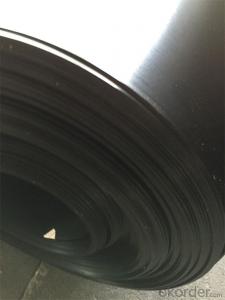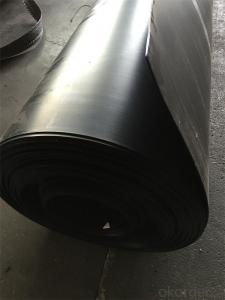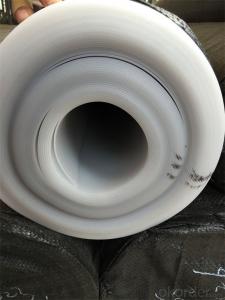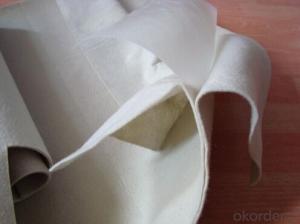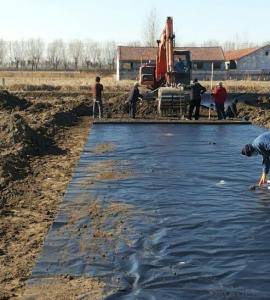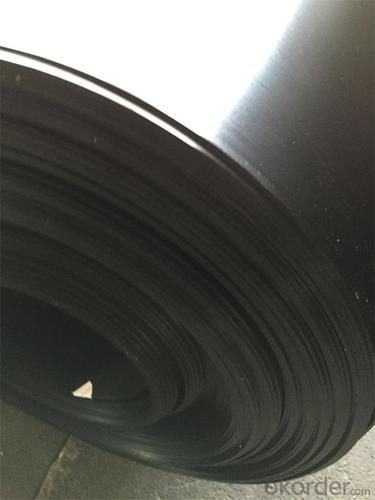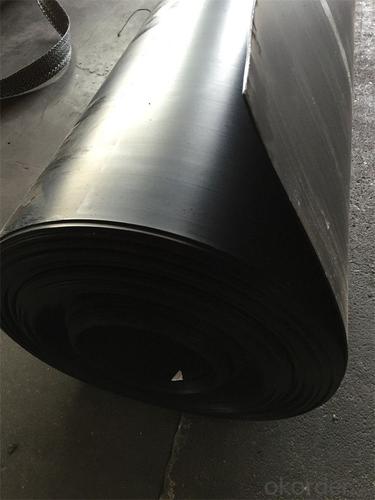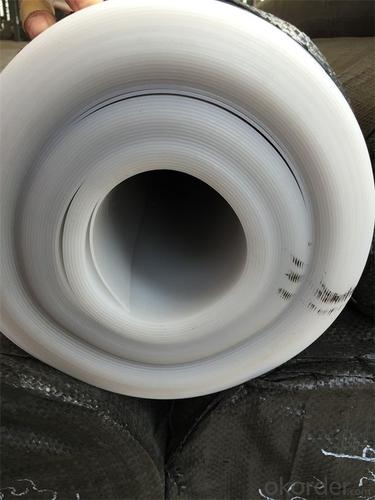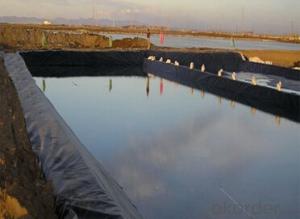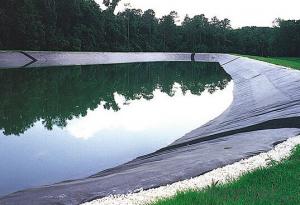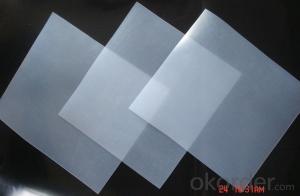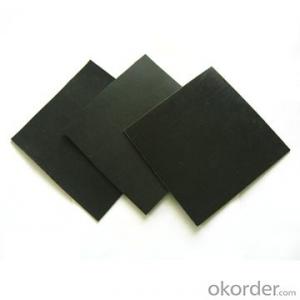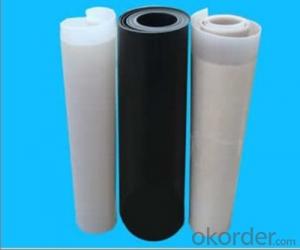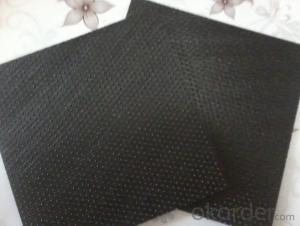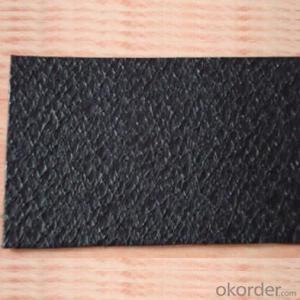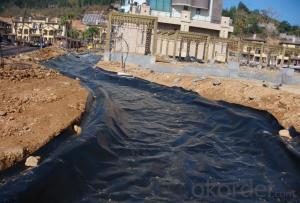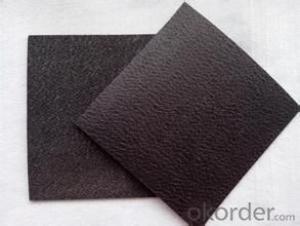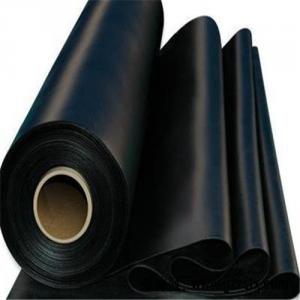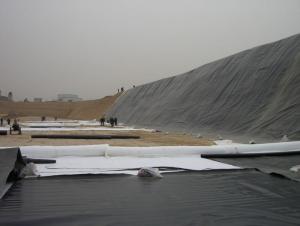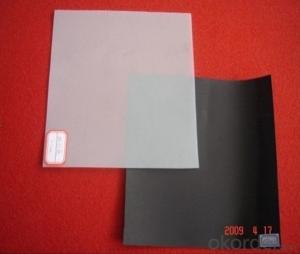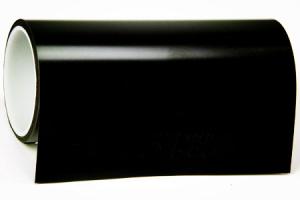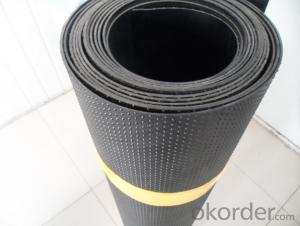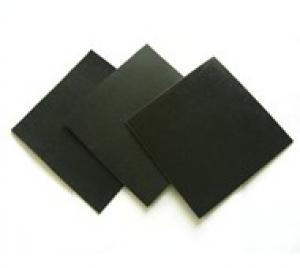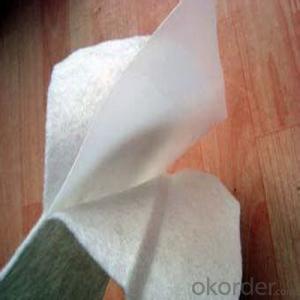Epi Geomembrane - Waterproof HDPE Geomembrane for Pond and Lake Dam
- Loading Port:
- Qingdao
- Payment Terms:
- TT OR LC
- Min Order Qty:
- 5000 m²
- Supply Capability:
- 2000000 m²/month
OKorder Service Pledge
OKorder Financial Service
You Might Also Like
Geomembrane Introduction:
1.Antiseepage and seperation
2.fish pond material
3.good quality and cheap price
4.fast delivery
Geomembrane Specification:
Thickness | 0.12mm-4.0mm |
Length | 50m/roll,100m/roll,150m/roll or as your choice |
Width | 5.0m-7.0m or as your choice |
Color | White/Black/Blue/Green,mainly black |
Material | HDPE |
Delivery port | Qingdao |
Package: | woven bag or as customers' requests |
Product time | 2-20 days |
Features | 1.Good physical and mechanic performance |
2.High tearing resistance, strong deformation adaptability | |
3.Puncture-resisting, aging resisting, ultra-violet radiation, oil and salt, and corrosion resistance | |
4.Good adaptability to high and low temperature, non-toxicity, long service life | |
5.Good waterproof, drainage, anti-seepage and damp proof effects | |
6.Complete width and thickness specifications, low cost and easy installation. | |
Note | We can do as your demand,please feel free to contact us for more information |
Geomembrane Usage:
1.landfill,sewage or control the waste residue seashores seepage.
2.Lake dam,tailings dams,sewage dam and reservoir,channel,storage of liquid pools(pit,ore)
3.The subway ,tunnel,anti-seepage lining of basement and tunnel.
4.To control the roadbed and other foundation saline seepage.
5.Dike,the front of the sam foundation seepage prevention bedding,level of vertical impervious layer , construction cofferdam,waste field.
6.Seawater,freshwater fish farms.
7.Highway,the foundations of the highway and railway;the expansive soil and collapsible loess of the waterproof layer.
8.Anti-seepage of roofing
HDPE geomembrane liner technical of ASTM test GM 13 standard:
No. | Item | Test Value | |||||||
0.75mm | 1.0 mm | 1.25 mm | 1.5 mm | 1.8mm | 2.0mm | 2.5 mm | 3.0mm | ||
1 | Minimum Density(g/cm³) | 0.94 | |||||||
2 | Strength at yield,N/mm | 11 | 15 | 18 | 23 | 27 | 30 | 38 | 45 |
3 | Strength at break ,N/mm | 21 | 28 | 33 | 43 | 51 | 57 | 71 | 85 |
4 | Elongation at yield,% | 13 | |||||||
5 | Elongation at break,% | 700min | |||||||
6 | Tear Resistance N | 93 | 125 | 156 | 187 | 219 | 249 | 311 | 373 |
7 | Puncture Resistance N | 263 | 352 | 440 | 530 | 618 | 703 | 881 | 1059 |
8 | Stress Crack Resistance, hrs | 400 | |||||||
9 | Carbon Black Content, % | 2.0-3.0 | |||||||
Carbon Black Dispersion | 1 or 2 | ||||||||
10 | Standard OTI Min | 100 | |||||||
High Pressure OTI Min | 400 | ||||||||
11 | Impact Cold Crack at -70°C | Pass | |||||||
12 | Water vapor permeability (gNaN/cm2 .s.Pa) | ≤1.0×10-13 | |||||||
13 | Dimensional Stability (%) | ±2 | |||||||
Gemembrane Show:
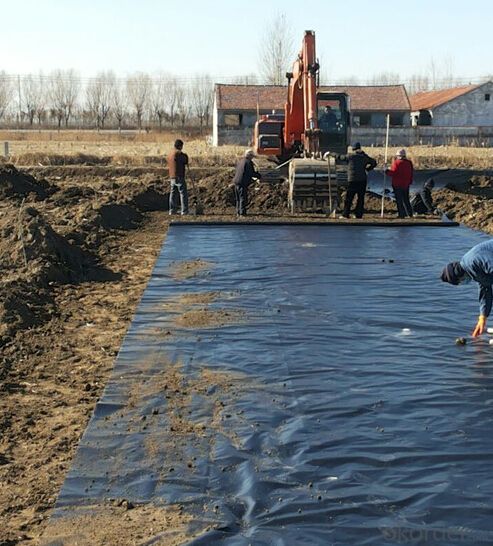
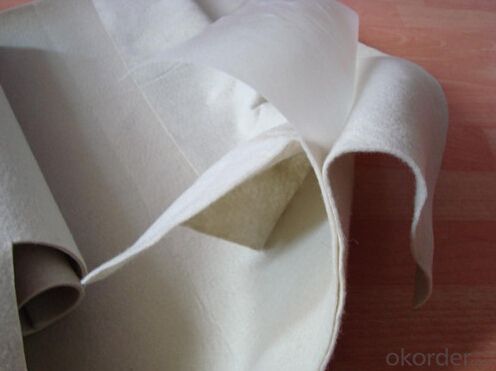
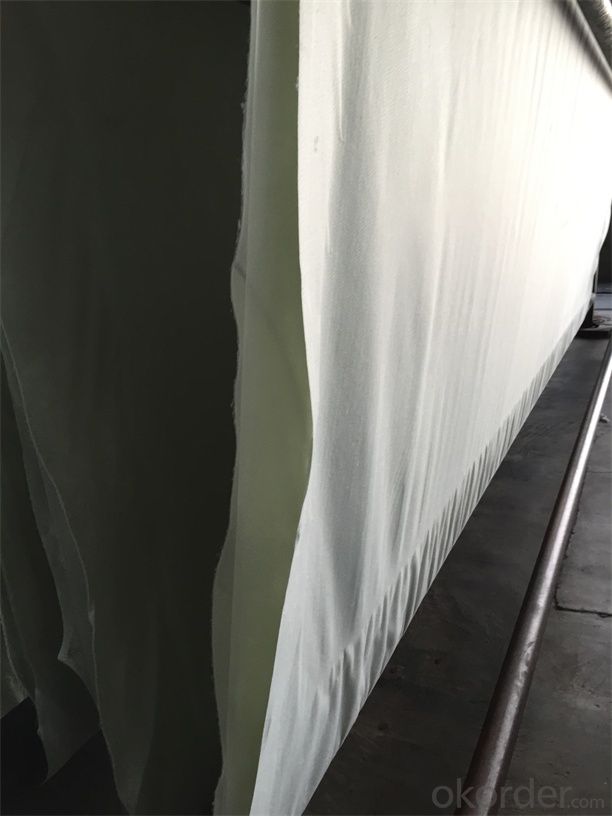
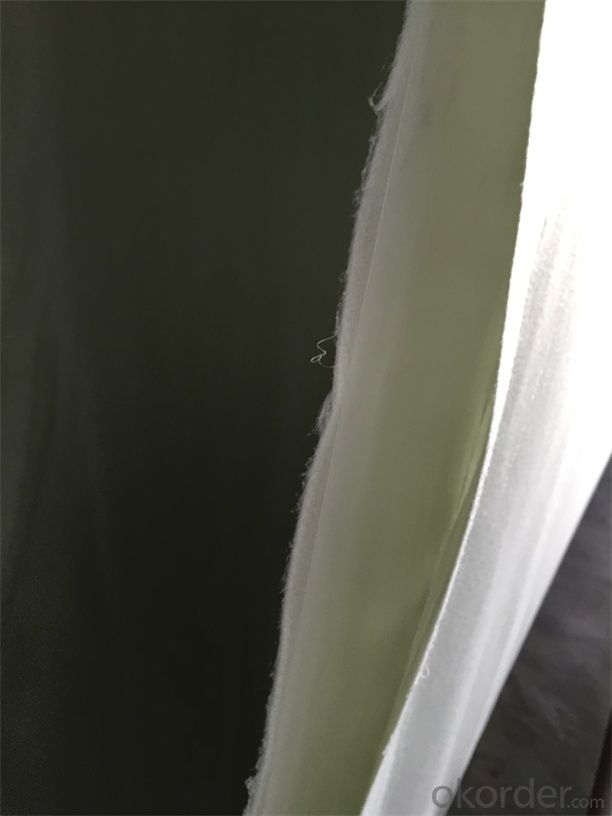
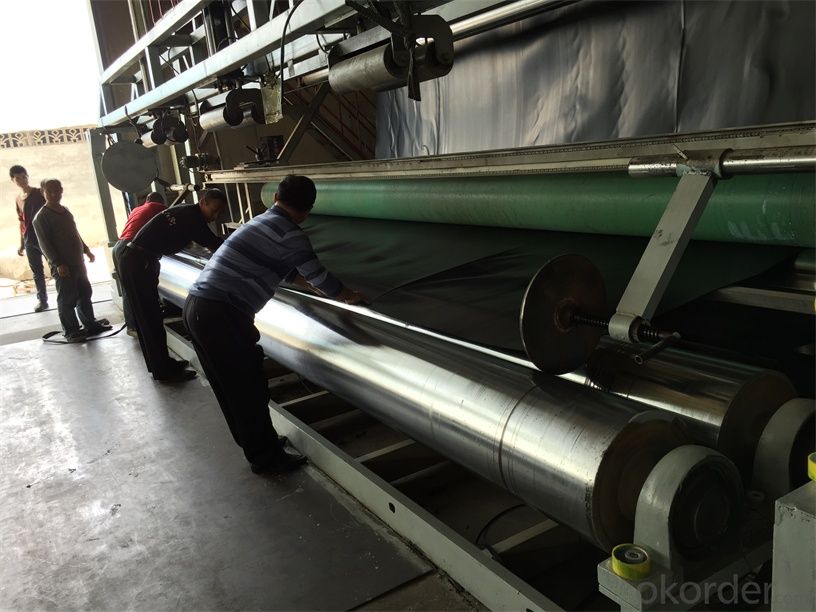
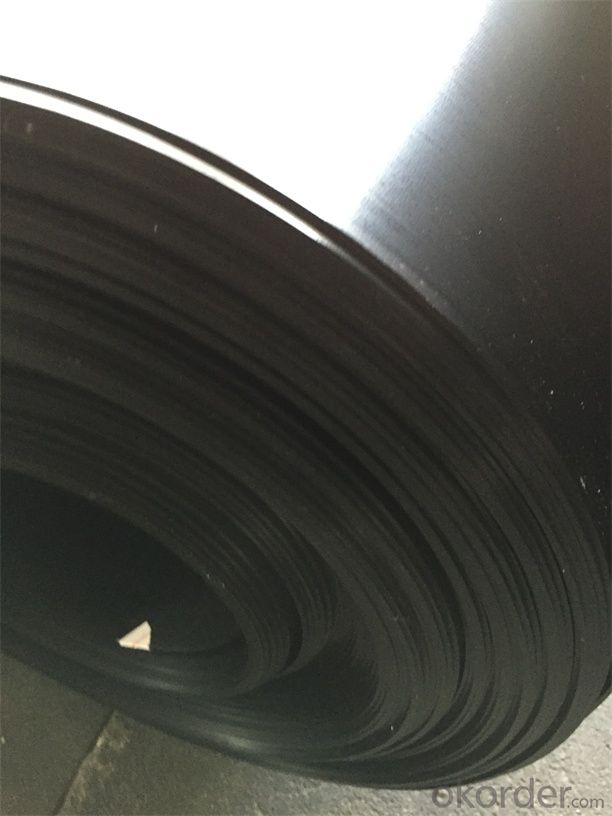
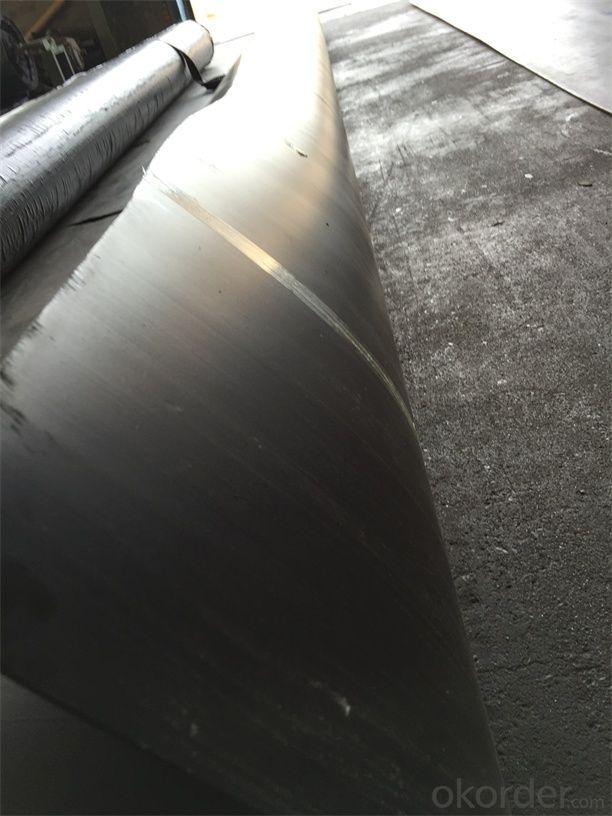
FAQ:
- Q1: Can you provide a sample for us?
A:Yes,We can send free samples,but customer need to pay the freight.
HDPE Geomembrane Price
- Q2: What is your minimum order quantity?
A:The minimum order quantity is 5000 ,but it is negotiable.
HDPE Geomembrane Price
- Q3:What is your payment terms?
A: T/T,Western Union,Paypal,L/C...
HDPE Geomembrane Price
- Q4:What is your delivery time?
A:Production time usually costs 2-20 days.
- Q: What is the soft membrane?
- Soft membrane ceiling, known as flexible ceiling, tensile membrane ceiling and punt ceiling, is produced in France and is a high-grade green decoration material. Variety of texture and color provide you with elegant design inspiration, making it a special indoor decorative spotlight. Weighing about 180-320 grams per square meter. Because of its good flexibility and can be freely designed for a variety of modeling and used for winding corridor, open viewing space and various occasions, all without exception. Soft membrane ceiling has become the preferred material for suspended ceiling materials. Soft membrane is made of special polyvinyl chloride ethylene material, 0.18 - 0.2 mm,weigning 180 ~ 320 g per square meter, and its fire prevention level is B1 level. Soft membrane is shaped by one or more cutting and finished by high frequency welding. Soft membrane is made in the factory after measuring the size of ceiling. Stability of membrane size is similar to soft rolls at - 15 degrees to 45 degrees, looks good in three-dimensional effect, but more difficult to take care of, what'r more, the cost is relatively high. Advantages of soft membrane ceiling: Casual style with a variety of colors, mould proof, bacteria resistance, anti aging; good insulation and waterproof function; sound and heat insulation, save energy costs for cooling and heating ; free from dust and smoke; non-toxic, tasteless, environmental safety, convenient installation and disassembly. Disadvantages: Difficult to clean up. Soft membrane ceiling has different prices, but it depends on the style and craftsmanship, some cost hundres and some cost dozens RMB.
- Q: Are geomembranes resistant to algae growth?
- Yes, geomembranes are generally resistant to algae growth. They are designed to be impermeable and provide a barrier against various environmental factors, including the growth of algae. The smooth surface of geomembranes makes it difficult for algae to attach and thrive, reducing the risk of algae growth. However, it is important to note that prolonged exposure to sunlight and certain environmental conditions may still allow some algae to grow on the surface over time. Regular maintenance and cleaning can help prevent and manage any potential algae growth.
- Q: What are the advantages of eletromembrane floor heating?
- 1, green and environmental protection, no environmental pollution electrothermal film heating system will not produce soot and dust, which is more in line with the requirements of urban planning, very suitable for the requirements of going green and environmental protection in modern society. 2, warm like the natural sunlight due to the electrothermal?film heating system use radiation mode to supply heating, it can bring people warm and comfortable feeling like bathing in the sunlight. Which will not produce dry and hot feeling like that produced by traditional heating system. 3, low temperature operation, safe and reliable The electrothermal film surface will keep running in low temperature during work and the highest temperature will not exceed 60 degrees Celsius, so scald, explosion and fire will not happen. The whole system is connected through parallel mode, running very stable and with high feasibility. 4, can be charged according to households As electrothermal?film heating system can sdapy to the needs of a variety of users, so it can be measured according to households, units or floors, etc., which enable users to control the electricity consumption freely.
- Q: How are geomembranes used in environmental applications?
- Geomembranes are used in various environmental applications as a protective barrier or liner to prevent the contamination of soil and groundwater. They are commonly used in landfills, hazardous waste containment sites, mining operations, and wastewater treatment facilities to effectively isolate and control the flow of fluids or gases, ensuring environmental safety and protection.
- Q: What are the advantages of using geomembranes in industrial wastewater treatment?
- There are several advantages of using geomembranes in industrial wastewater treatment. Firstly, geomembranes act as a barrier, preventing the contamination of soil and groundwater by containing the wastewater. This helps to protect the environment and ensure compliance with regulations. Secondly, geomembranes are highly resistant to chemical degradation, making them ideal for handling and treating industrial wastewater that may contain hazardous substances. They provide a reliable and durable solution for containing and treating wastewater in harsh industrial environments. Furthermore, geomembranes offer flexibility in design and installation, allowing for customization to fit specific site requirements. They can be easily fabricated into different shapes and sizes, ensuring an efficient and effective wastewater treatment system. Additionally, geomembranes have low maintenance requirements and a long lifespan, reducing operational costs over time. They are also relatively easy to install and repair, minimizing downtime and ensuring continuous wastewater treatment operations. Lastly, the use of geomembranes in industrial wastewater treatment helps to improve overall efficiency by facilitating the separation of contaminants from water. This leads to cleaner water for reuse or discharge, contributing to water conservation and sustainable practices. In summary, the advantages of using geomembranes in industrial wastewater treatment include environmental protection, chemical resistance, flexibility, low maintenance, and improved efficiency.
- Q: Why the drain-pipe below rubber dam base plate is covered with geomembrane?
- This allows water to enter the drain pipe and keeps the soil out of it.
- Q: What are the disadvantages of using geomembranes?
- Some potential disadvantages of using geomembranes include their vulnerability to punctures or tears, their limited lifespan compared to other materials, their potential for degradation from exposure to sunlight or chemicals, and the complexity and cost of installation and maintenance. Additionally, improper installation or inadequate quality control can lead to leakage or failure of the geomembrane, compromising its effectiveness as a barrier.
- Q: How do geomembranes contribute to erosion control in railway and train track construction?
- Geomembranes contribute to erosion control in railway and train track construction by providing a strong barrier against water and soil movement. They are used as liners on slopes, embankments, and subgrades to prevent erosion caused by heavy rainfall, runoff, and seepage. Additionally, geomembranes help to stabilize the soil, reduce sedimentation, and protect the underlying infrastructure from damage, ensuring the long-term stability and durability of railway and train tracks.
- Q: How do geomembranes contribute to soil moisture retention?
- Geomembranes contribute to soil moisture retention by acting as a barrier that prevents water from evaporating or percolating through the soil. This helps to create a waterproof layer, reducing water loss and enhancing moisture levels in the soil, which is crucial for plant growth and maintaining a stable soil environment.
- Q: How are geomembranes tested for puncture resistance?
- Geomembranes are tested for puncture resistance using various methods, including the falling dart test, the puncture probe test, and the static puncture test. These tests involve subjecting the geomembrane to controlled impact or pressure to determine its ability to withstand punctures and maintain its integrity.
Send your message to us
Epi Geomembrane - Waterproof HDPE Geomembrane for Pond and Lake Dam
- Loading Port:
- Qingdao
- Payment Terms:
- TT OR LC
- Min Order Qty:
- 5000 m²
- Supply Capability:
- 2000000 m²/month
OKorder Service Pledge
OKorder Financial Service
Similar products
Hot products
Hot Searches
Related keywords
